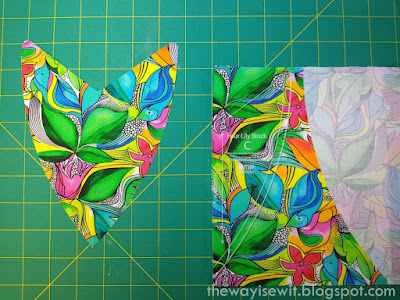Last week I finished two small quilts that a friend had requested. Along with the Wonky Log Cabin quilt, she wanted two more of a similar size so each of her grandchildren could have a picnic quilt. Isn’t that a neat idea?
She left it up to me, whatever kind of scrap quilt I wanted to make. Size-wise, I was aiming for around 48 inches square.
The idea for this first one came to me one evening as I finished a Sudoku puzzle—honestly, the first one I had ever finished.
I had made two Sudoku quilts a dozen or so years ago. At that time, Sarah had shared her Sudoku pattern with me, so I didn’t have to solve a puzzle to know how to lay it out (thankfully). I had gifted one of the quilts and used the other as a throw for a while, but now that one was safely stacked deep in the quilt closet. Out of sight, out of mind.
But one night a few weeks ago, I grabbed a Sudoku puzzle book another friend had given me last year. I had never done an entire Sudoku puzzle before; truth be told, it never seemed to click with me and felt like an exercise in frustration (at least my attempts at the ones printed in the newspaper). That night, however, I needed something to do before bed that would make my brain tired and give me something to focus on besides the fretful thoughts in my head. So I started on the first page of the book, presumably the easiest of the easy. An hour later, I had solved my first puzzle—and remembered the Sudoku quilts.
The next morning, with that puzzle as a reference, I pulled nine fabrics from the stash and assigned each one a number. I cut nine 4-1/2 inch squares from each fabric and then laid out this quilt.
I used a bright green Grunge fabric for the sashing between blocks, cut 2 inches, finished it with a light purple tone-on-tone, cut 4-1/4 inches, for the border.
That was not the border I initially thought I’d use, which was this brown floral. Too dark. Cute fabric, though. I saved it for the next quilt, as you’ll see.
After quilting, the Sudoku quilt came in around 48-1/2 inches square. Can't you just imagine a sweet little tea party happening on this quilt?
I liked that brown floral, so for the next quilt, I started pulling fabrics to pick up on the colors of the flowers in the print. I cut those into strips and sewed them together into columns, stacked coin style.
The columns were trimmed to 6-1/2 inches wide. The vertical sashing between columns was cut into 3-1/2 inch wide strips, with an outer border cut 4-1/4 inches wide.
A peek at the pieced backing, above. After quilting, the stacked coins quilt measured 47 x 48-1/2 inches. I know her granddaughters are going to love these!
Then I made a cute mug rug with the leftovers. :)
Linking to:
~Paulette


























